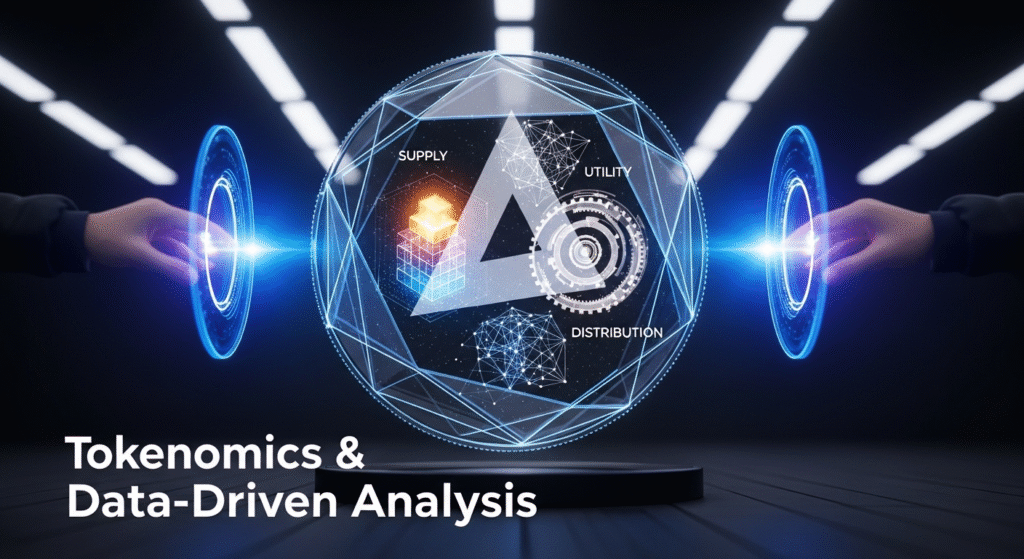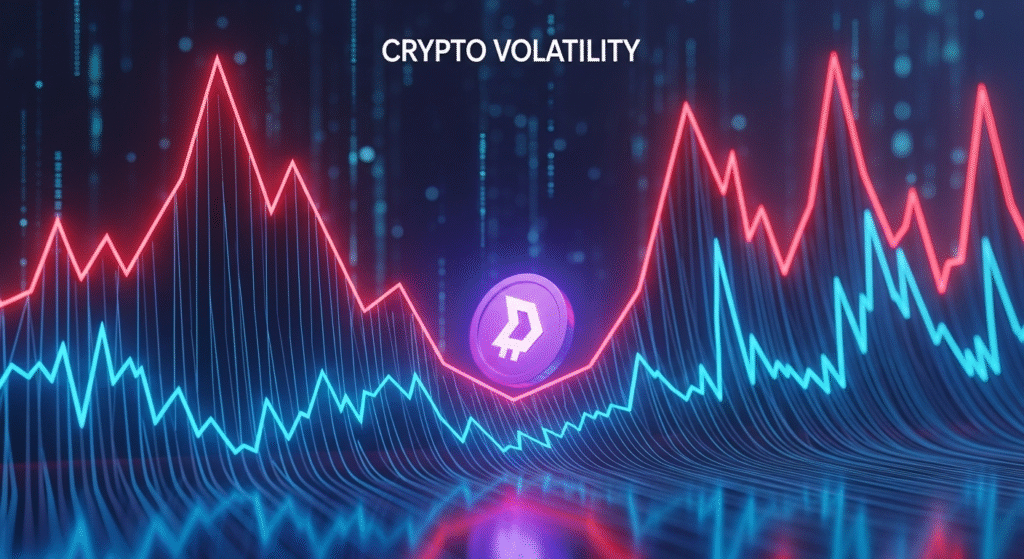.
Crypto Volatility: 5 Ways to Master Altcoin & Meme Coin Swings
Ever wondered if your altcoins are performing a roller coaster impersonation, or if those meme coins you bought are more meme-worthy for their price action than their underlying utility? Could you potentially turn those wild crypto price swings into predictable opportunities? The world of digital assets is a dynamic arena, and nowhere is this more apparent than in the realm of altcoins and meme coins. Understanding and navigating Crypto Volatility isn’t just a good idea; it’s essential for survival, let alone thriving, in this exciting space.
As a seasoned blogger, SEO specialist, and generative engine optimization (GEO) expert, I’ve seen firsthand how market sentiment, technological advancements, and even internet trends can drastically impact the value of digital currencies. Many investors are drawn to the allure of altcoins and meme coins for their potential for rapid gains, but often find themselves blindsided by their equally rapid declines. Mastering the inherent Crypto Volatility allows you to adapt, strategize, and potentially profit from these energetic market movements rather than be swept away by them. In this comprehensive guide, we’ll delve into practical, data-driven strategies to help you confidently manage the inevitable Altcoin Price Swings.
Crypto Market Overview
The cryptocurrency market, as of late, has been a spectacle of ebb and flow. While Bitcoin and Ethereum often anchor the narrative, the real fireworks frequently occur within the altcoin sector. We’ve seen an astonishing surge in interest and participation in newer, often community-driven projects, including a significant rise in meme coins. This surge is fueled by a combination of factors: increasing accessibility through user-friendly exchanges, the tantalizing prospect of high returns, and the pervasive influence of social media and online communities.
Altcoins (alternative coins to Bitcoin) represent a vast universe of digital currencies, each aiming to solve different problems or offer unique functionalities. From groundbreaking DeFi protocols to innovative layer-1 solutions, the innovation within altcoins is relentless. Meme coins, on the other hand, often originate from internet jokes or popular culture references, achieving meteoric rises primarily through viral marketing and community hype. Their value is frequently detached from intrinsic utility, making them particularly susceptible to extreme Crypto Volatility.
Key market indicators at present suggest a cautiously optimistic yet highly speculative environment. While institutional interest continues to grow for established cryptocurrencies, the retail investor appetite for high-risk, high-reward plays remains robust. This dynamic creates a fertile ground for dramatic Altcoin Price Swings, presenting both opportunities and significant challenges for investors. Furthermore, the increasing prevalence of airdrops – the distribution of free tokens to holders of specific cryptocurrencies or participants in certain platforms – adds another layer of complexity and potential reward, but also introduces new avenues for speculative trading and volatility.

The Core Concept: How Altcoins & Meme Coins Actually Work
To truly master the swings, we first need to understand what these digital assets are and why their prices move so dramatically.
What Are Altcoins / Meme Coins / Airdrops?
Altcoins: Short for “alternative coins,” altcoins are any cryptocurrencies other than Bitcoin. They were originally conceived as improvements or alternatives to Bitcoin’s perceived limitations. This can range from faster transaction speeds and lower fees to enhanced privacy features or entirely new consensus mechanisms. Examples include Ethereum (ETH), which introduced smart contracts; Solana (SOL), known for its high throughput; and Cardano (ADA), focusing on research-driven development.
Meme Coins: Meme coins are a more recent phenomenon, born from internet culture and often characterized by their playful branding and community-driven narratives. Dogecoin (DOGE), famously started as a joke, and Shiba Inu (SHIB), which positioned itself as a “Dogecoin killer,” are prime examples. Their value is heavily influenced by social media trends, celebrity endorsements (or mentions), and the collective enthusiasm of their online communities. While some meme coins are starting to incorporate utility, their initial and primary driver is often virality and speculative interest.
Airdrops: An airdrop is a marketing strategy where a cryptocurrency project distributes free tokens to its community. This is often done to reward early adopters, increase network distribution, or promote a new token. For example, a new DeFi protocol might airdrop its governance tokens to users who have actively participated in its platform or held a certain amount of another cryptocurrency. Airdrops can be a significant source of new tokens for investors, but they also introduce new assets into circulation, which can impact market dynamics and create opportunities for arbitrage or trading.
Key Components & Technologies
Behind the often-whimsical branding of meme coins and the ambitious functionalities of altcoins lies a foundation of sophisticated technology, primarily the blockchain.
- Blockchain Technology: At its core, every cryptocurrency operates on a blockchain – a decentralized, distributed ledger that records all transactions across many computers. This ledger is inherently secure and transparent, as once a transaction is added, it’s extremely difficult to alter.
- Smart Contracts: Many altcoins, most notably Ethereum, utilize smart contracts. These are self-executing contracts with the terms of the agreement directly written into code. They run on the blockchain, automatically executing actions when predefined conditions are met, enabling decentralized applications (dApps), DeFi protocols, and the creation of new tokens (like those distributed in airdrops).
- Consensus Mechanisms: This is how a blockchain network agrees on the validity of transactions. Common examples include Proof-of-Work (PoW), used by Bitcoin, where miners solve complex computational puzzles, and Proof-of-Stake (PoS), used by Ethereum 2.0, where validators stake their coins to secure the network. Different mechanisms have varying impacts on transaction speed, energy consumption, and security.
- Tokenomics: This refers to the economic model of a cryptocurrency, encompassing its supply (total supply, circulating supply), distribution, utility, inflation/deflation mechanisms, and governance. Sound tokenomics are crucial for long-term value and stability, though many meme coins often have less robust tokenomic models.
Understanding these foundational elements is crucial for assessing genuine value, distinguishing between speculative bubbles and sustainable projects, and ultimately navigating the inherent Crypto Volatility of the altcoin and meme coin markets.
The Data-Driven Perspective
To truly master Crypto Volatility, we must move beyond anecdotal evidence and embrace data-driven insights. Understanding market performance trends and the underlying tokenomics of specific assets is paramount.
Market Data & Trends
The performance of altcoins and meme coins is often characterized by extreme Altcoin Price Swings. Data from major cryptocurrency tracking websites (e.g., CoinMarketCap, CoinGecko) consistently shows that while Bitcoin might experience daily percentage changes in the single digits, many altcoins can see double-digit, or even triple-digit, fluctuations within the same timeframe.
- Altcoin Market Capitalization: The total market capitalization of altcoins, excluding Bitcoin, represents a significant portion of the overall crypto economy. Recent trends have shown periods of rapid expansion in this segment, driven by innovation and speculative interest, followed by sharp contractions as investor sentiment shifts. For instance, during a bull run, the altcoin market cap can surge by hundreds of billions of dollars in mere months.
- Meme Coin Performance: Meme coins, in particular, exhibit the most extreme volatility. Data reveals that while a single meme coin might skyrocket in value based on social media momentum, its lifespan can be incredibly short. Many peak and then crash, with only a select few maintaining any significant market presence. The risk of losing one’s entire investment in a meme coin is substantially higher than in more established altcoins.
- Airdrop Distributions: The impact of airdrops on token prices can also be measured. Immediately following a significant airdrop, the token price might see a temporary dip due to holders selling their newly acquired assets. Conversely, a well-executed airdrop that strategically distributes tokens among active users can foster a loyal community, potentially leading to long-term price appreciation.
By analyzing historical data, trading volumes, and market sentiment indicators, investors can gain a more informed perspective on potential future movements and better anticipate Altcoin Price Swings.
Tokenomics & Market Health
Tokenomics – the economics of a cryptocurrency – are a critical determinant of its long-term viability and resistance to extreme Crypto Volatility.
- Supply Dynamics: A cryptocurrency with a fixed or deflationary supply (where tokens are burned or removed from circulation over time) can theoretically increase in scarcity and value. In contrast, cryptocurrencies with an uncapped or highly inflationary supply are more susceptible to price depreciation, especially if demand doesn’t keep pace. For example, projects with a large circulating supply of tokens being unlocked and sold by early investors can lead to significant downward pressure on prices.
- Utility and Demand: The true value of a cryptocurrency is often tied to its utility. Does it power a blockchain network? Is it used for transactions within a specific ecosystem? Does it grant governance rights? Altcoins with strong use cases and genuine demand from users and developers are generally more resilient to massive Altcoin Price Swings than those driven solely by speculation. Meme coins often struggle in this area, with utility often being an afterthought rather than a design principle.
- Distribution and Vesting Schedules: How tokens are initially distributed and the schedules for when tokens are unlocked for early investors and team members are crucial. If a large percentage of tokens are held by a few early investors, they have the power to significantly impact the market by selling large amounts, causing Crypto Volatility. Vesting schedules that gradually release tokens help to prevent sudden dumps and promote more stable price discovery.
Analyzing tokenomics requires diligent research. Look at the project’s whitepaper, understand the token’s purpose, and assess the distribution strategy. This deep dive into the fundamentals is a key strategy for mitigating risk in the face of Crypto Volatility.
Risks, Challenges & Competition
While the potential rewards of altcoins and meme coins are attractive, it’s crucial to acknowledge the significant risks and challenges they present, especially in comparison to more established cryptocurrencies.
Risks of Altcoins and Meme Coins
The allure of rapid gains often masks substantial risks inherent in these digital assets:
- Extreme Volatility: This is the most prominent risk. Prices can skyrocket and plummet within hours, making it a highly speculative environment. Sudden drops can lead to significant capital loss, especially for inexperienced investors.
- Security Vulnerabilities: New projects, particularly those with complex smart contracts, can be targets for hackers. Smart contract exploits can lead to the theft of millions of dollars worth of crypto, rendering the associated tokens worthless. Meme coins, often launched with minimal development oversight, are particularly susceptible.
- Regulatory Uncertainty: The regulatory landscape for cryptocurrencies is still evolving globally. Unclear regulations can lead to crackdowns or bans, which can devastate the price of specific tokens or entire categories of digital assets.
- Lack of Intrinsic Value/Utility: Many altcoins and, especially, meme coins lack a strong underlying use case or a clear path to adoption. Their value is often driven by speculation and hype, making them vulnerable to sentiment shifts and ultimately prone to collapse.
- Market Manipulation: The relatively smaller market caps of many altcoins and meme coins make them more susceptible to “pump-and-dump” schemes, where a group of individuals artificially inflate the price before selling off their holdings.
- Rug Pulls: This is a particularly insidious risk in the meme coin space. Developers create a project, attract investors, and then suddenly abandon the project, taking all the invested funds with them.
How Do Altcoins & Meme Coins Stack Up Against Competitors?
To better understand their position and associated Crypto Volatility, let’s compare them to Bitcoin, the original cryptocurrency, and Ethereum, the leading smart contract platform.
| Feature | Bitcoin (BTC) | Ethereum (ETH) | Altcoins (General) | Meme Coins (General) |
|---|---|---|---|---|
| Primary Use Case | Store of Value, Digital Gold | Smart Contracts, dApps, DeFi, NFTs | Varies widely: payments, supply chain, gaming, privacy, specific industry solutions | Community building, speculative trading, internet culture, entertainment |
| Market Cap | Highest | Second Highest | Varies widely, from billions to millions | Varies widely, often starting low and potentially spiking dramatically |
| Volatility | Relatively lower compared to altcoins/memes | Moderate to high | High to Extreme | Extremely High |
| Technology | Blockchain, PoW consensus | Blockchain, Smart Contracts, Transitioning to PoS | Diverse: various blockchain architectures, consensus mechanisms, smart contract capabilities | Often built on existing blockchains (like Ethereum as ERC-20 tokens), less unique tech |
| Community | Strong, diverse, global | Strong, developer-focused, active ecosystem | Varies: strong for established projects, niche for smaller ones | Highly engaged, social media driven, often meme-centric |
| Risk Profile | Moderate (market downturns) | Moderate to High (market downturns, tech risks) | High (volatility, security, adoption) | Very High (volatility, rug pulls, manipulation, lack of utility) |
| Innovation | Focused on security and store of value | Hub of blockchain innovation, platform for new ideas | High | Low to Moderate (innovation often stems from clever marketing or community initiatives) |
This comparison highlights the spectrum of risk and reward. Bitcoin offers stability and a store of value, Ethereum is the engine for much of the innovation, while altcoins and meme coins represent the higher-risk, higher-reward fringe, demanding a sophisticated approach to managing Crypto Volatility.
The Future Outlook
The trajectory of altcoins and meme coins is closely tied to the broader evolution of the cryptocurrency space and technological innovation.
What’s Next for Altcoins / Meme Coins / Airdrops?
The future for altcoins and meme coins is multifaceted, influenced by several key trends:
- Maturation of DeFi and NFTs: As Decentralized Finance (DeFi) and Non-Fungible Tokens (NFTs) continue to mature, altcoins that power these ecosystems are likely to see sustained growth and adoption. Projects offering real utility and solving tangible problems in these sectors are well-positioned.
- Layer-2 Solutions and Scalability: Many altcoins are focused on solving the scalability issues plaguing earlier blockchains. Advancements in Layer-2 scaling solutions (like Polygon for Ethereum) and new, high-throughput blockchain architectures will likely shape the landscape, potentially reducing transaction costs and increasing usability.
- The Role of Utility in Meme Coins: While meme coins may never fully escape their speculative nature, there’s a growing trend for some to incorporate utility, such as building decentralized applications, creating metaverse experiences, or facilitating community governance. Projects that successfully integrate tangible use cases might achieve greater longevity and reduce their extreme Crypto Volatility.
- Increased Regulatory Clarity: As governments worldwide develop clearer regulations, this will inevitably impact the altcoin and meme coin markets. Projects that comply with regulations may see increased adoption and reduced risk, while those that don’t could face significant challenges.
- The Impact of Airdrops: Airdrops are likely to remain a key marketing tool. However, as the market matures, we might see more sophisticated airdrop strategies designed to reward genuine users and foster long-term project commitment, rather than solely speculative trading. This could potentially dampen some of the extreme short-term Altcoin Price Swings associated with airdrops.
Ultimately, the future belongs to projects that can demonstrate innovation, robust tokenomics, strong community engagement, and a clear path to adoption. For investors, staying informed about these trends is crucial for navigating the dynamic and often volatile world of digital assets.
Conclusion
Navigating the exhilarating, yet often turbulent, waters of Crypto Volatility is a skill that can be honed. By understanding the fundamental differences between Bitcoin, altcoins, and meme coins, delving into the data behind market trends, meticulously analyzing tokenomics, and being acutely aware of the risks, you can approach these markets with greater confidence.
The five key takeaways from mastering Crypto Volatility, especially concerning altcoins and meme coins, are:
- Educate Yourself Continuously: Thoroughly research any altcoin or meme coin before investing. Understand its purpose, team, technology, and tokenomics.
- Diversify Wisely: Don’t put all your eggs in one basket. Diversify your crypto portfolio across different types of assets, but be mindful that diversification doesn’t eliminate risk, especially in highly volatile sectors.
- Invest What You Can Afford to Lose: Given the extreme Altcoin Price Swings, only invest capital that you are prepared to lose entirely without impacting your financial well-being.
- Embrace Long-Term Strategies: While quick gains are tempting, a disciplined, long-term investment strategy, often involving dollar-cost averaging, can help mitigate short-term Crypto Volatility.
- Manage Your Emotions: Decision-making driven by fear or greed is a trader’s worst enemy. Stick to your investment plan and avoid rash decisions based on market noise.
The world of cryptocurrency is constantly evolving, offering both unprecedented opportunities and significant challenges. By applying these data-driven strategies and maintaining a disciplined approach, you can better master the inherent Crypto Volatility and navigate the exciting landscape of altcoin and meme coin markets.
What are your go-to strategies for managing Altcoin Price Swings? Share your thoughts and experiences in the comments below! For more in-depth insights and to stay ahead of the curve, subscribe to our newsletter and explore our related articles on crypto trading strategies and deep dives into altcoin analysis.
FAQs
What is the safest way to invest in altcoins?
The safest approach involves thorough research, investing in projects with a proven track record and strong utility, diversifying your portfolio, investing only what you can afford to lose, and utilizing secure (preferably hardware) wallets. Avoid chasing highly speculative meme coins without understanding the risks.How do I identify a potential “rug pull”?
Look for red flags such as anonymous development teams, lack of a clear roadmap or whitepaper, unusually high initial token distributions to the developers, and aggressive marketing without substantial technological backing. Always be skeptical of projects promising guaranteed high returns.Are airdrops free money?
While you receive tokens for free, airdrops often require prior investment (holding a certain crypto) or effort (participating in a platform). The value of these tokens can be highly volatile, and many end up being worth very little, so they are not guaranteed “free money.”What’s the difference between an altcoin and a meme coin?
Altcoins are cryptocurrencies alternatives to Bitcoin, often with specific technological goals or use cases. Meme coins usually originate from internet jokes or cultural trends, with their value driven primarily by community hype and speculation, often lacking intrinsic utility.How can I reduce my exposure to Crypto Volatility when trading altcoins?
Strategies include diversifying your portfolio, using limit orders to avoid buying at inflated prices, practicing dollar-cost averaging, setting stop-loss orders to limit potential losses, and focusing on altcoins with strong fundamentals and proven utility rather than purely speculative assets.






